New Jersey inventor unveils ‘affordable’ hydrogen-solar home
Listen-
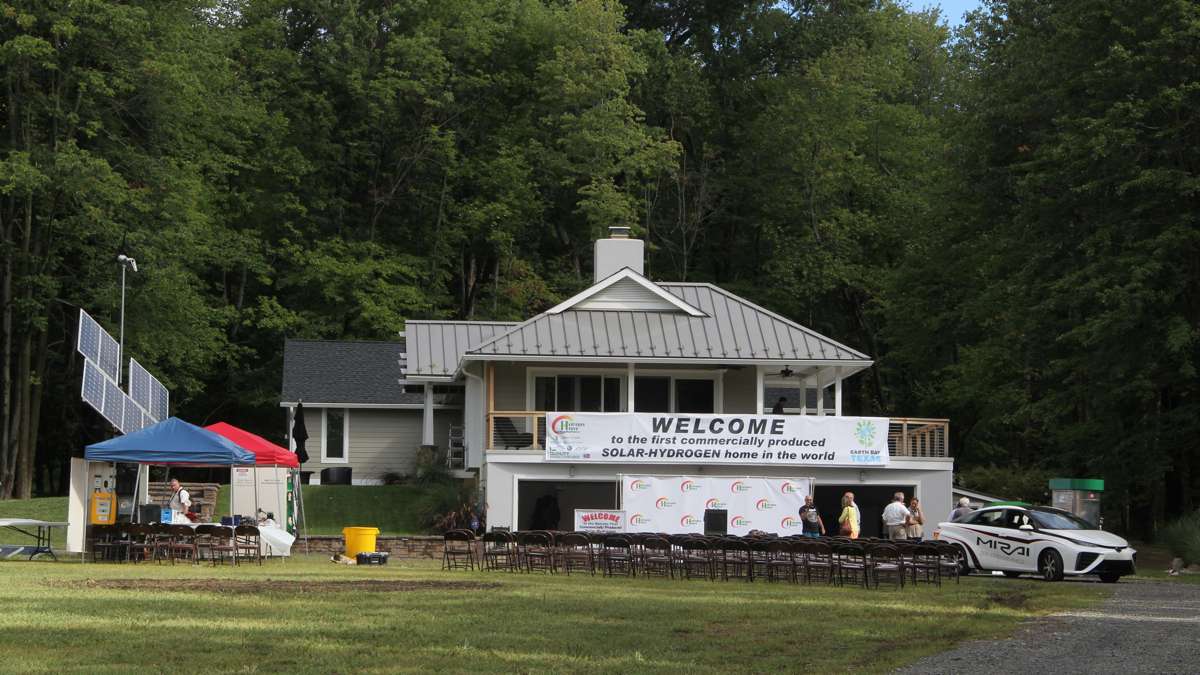
Alice De Tiberge's house in Pennington, N.J., is touted as the first commercially produced solar-hydrogen home in the world. (Emma Lee/WHYY)
-

Homeowner Alice De Tiberge keeps chickens and guinea fowl and sees herself as a steward of the land. (Emma Lee/WHYY)
-
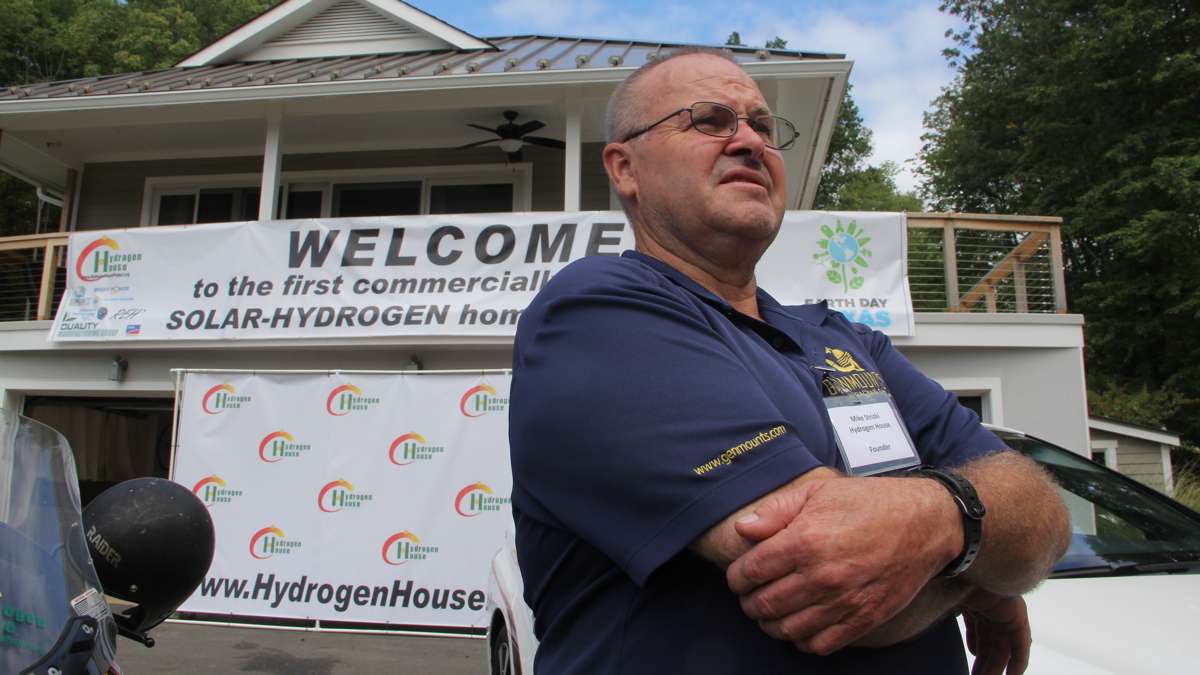
Mike Strizki, who designed the solar-to-hydrogen system, hopes to bring his technology to a wider market. (Emma Lee/WHYY)
-
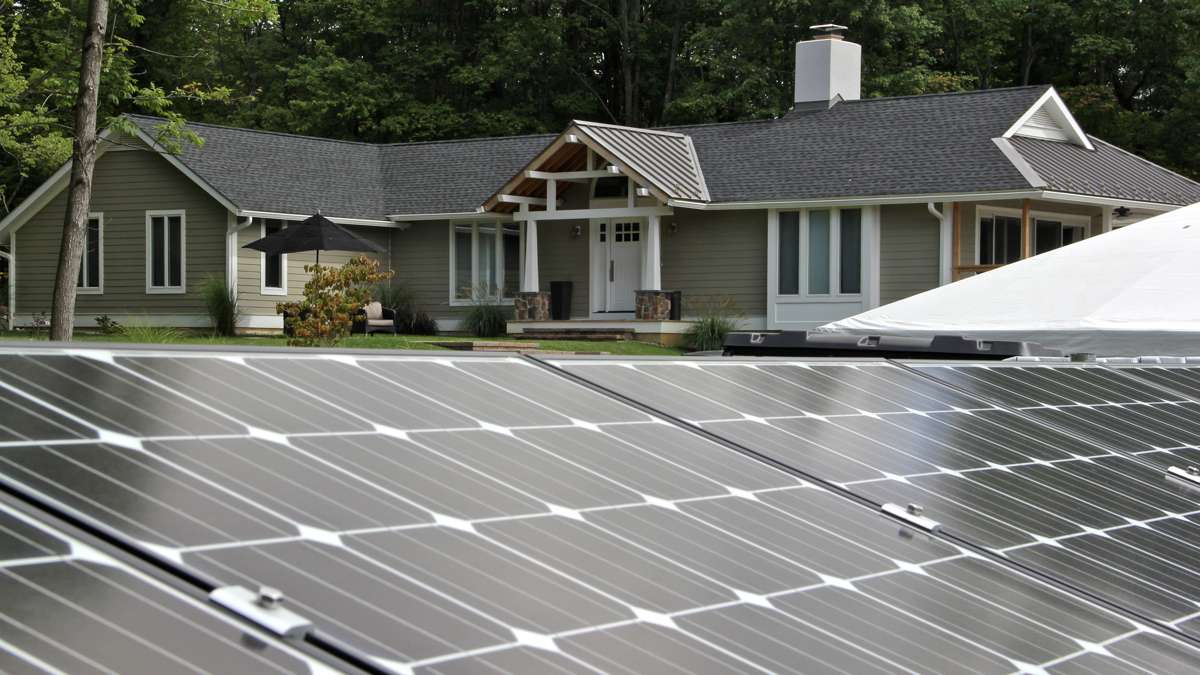
Alice De Tiberge's ranch home in Pennington is powered by solar panels and and a system that stores excess energy as hydrogen for use when sunlight is weak. (Emma Lee/WHYY)
-
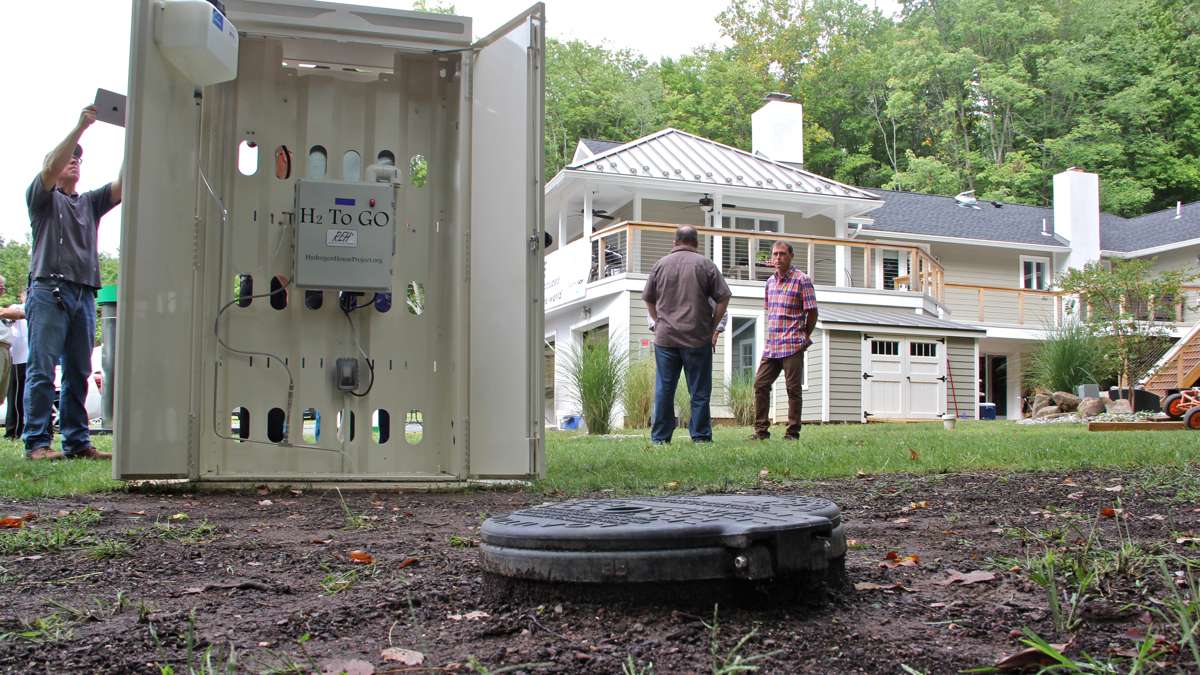
Hydrogen produced by excess energy from the solar panels is stored in a large underground tank until it is needed. (Emma Lee/WHYY)
-
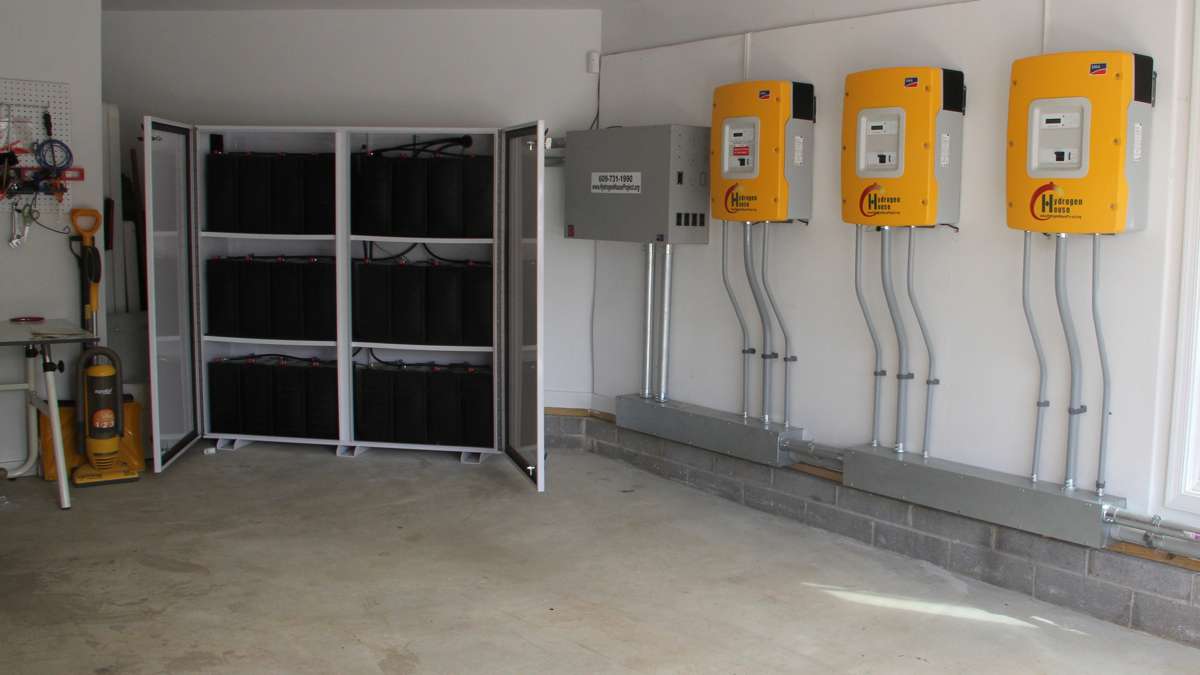
In the garage, batteries (left) store energy while a series of panels regulate the flow between the solar panels, the hydrogen tank and the house. The system also sells energy back to the grid once its own needs are met. (Emma Lee/WHYY)
-
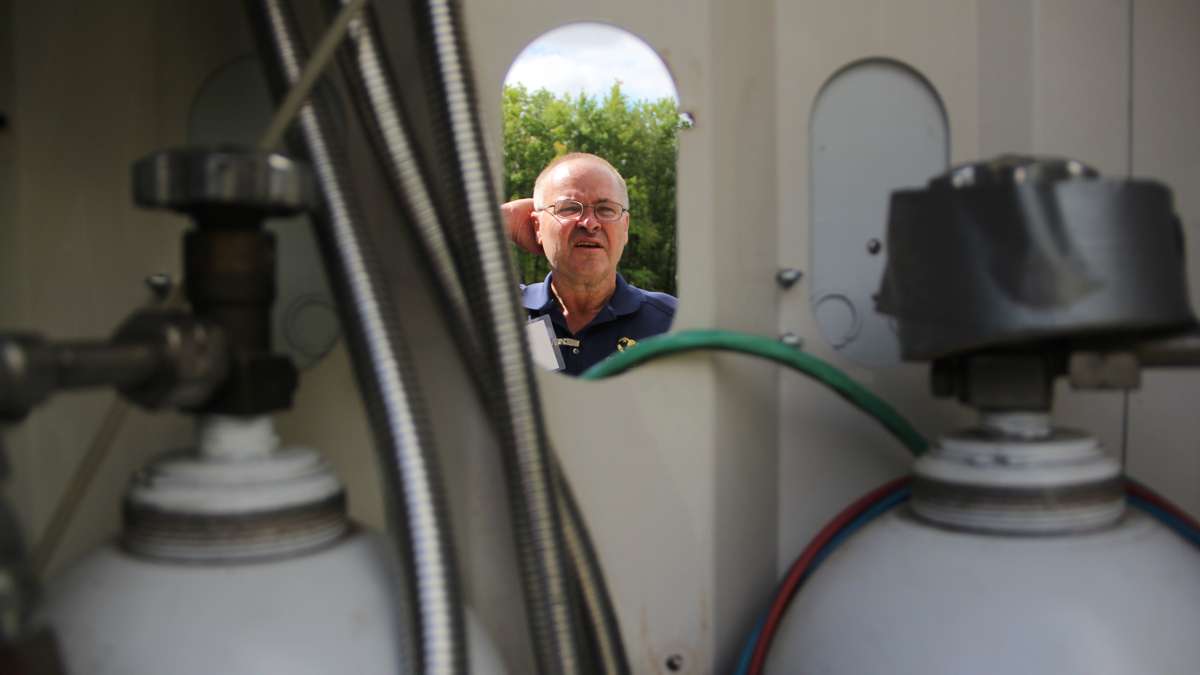
Mike Stanski examines a portable power station that stores the product of solar and wind power in hydrogen tanks. The Joule Box is marketed as an alternative to gas powered generators. (Emma Lee/WHYY)
A New Jersey inventor unveiled Friday what he is calling the first fully-permitted and affordable house powered by solar and hydrogen in Pennington, New Jersey. He is hoping it is the next step in making hydrogen, which has long been used as rocket fuel, a viable alternative energy for homeowners.
Mike Strizki is a stocky, fast-talking, fast-walking kind of guy. His passion is using hydrogen to store renewable energy generated by the sun, and he always seem to be selling it.
“You don’t have to ship it from Saudi Arabia, you don’t have to protect it from the Somali pirates, you don’t have to truck it all the way from Texas,” Strizki said. “Why not use something that’s renewable?”
In the middle of preparations for a big public unveiling of the house this afternoon, Strizki gave me a tour of the custom-made energy system. It starts with six large solar panels installed in the side yard of the wooded 11-acre lot.
“So this is what makes the energy every day when the sun comes up, whether it’s raining, snowing, shining, whatever,” Strizki said. “If solar energy hits the panel it generates electricity. You know some days more some days less, but that’s the problem with renewable energy it’s not consistent.”
Storing renewable energy is one of the biggest hurdles to overcome in using it as a primary energy source. The best batteries are still expensive, so the hunt is on for other storage methods. Strizki argues hydrogen is the answer, and he’s been working for years on developing the system that’s just been installed for the house in New Jersey.
Energy from the solar panels go first to the ranch-style home, then excess power heads to a refrigerator-sized unit on the other side of the driveway.
“This unit here generates the hydrogen. So excess electricity comes in, the electrolyzer splits it off into hydrogen and oxygen, and this line here feeds it down to that tank,” Strizki said.
The 1,000-gallon petroleum tank is buried underground. When there is not enough solar energy to power the house, hydrogen is pumped out of the tank and into a fuel cell. There, hydrogen mixes with oxygen to create water and energy, in the form of newly freed electrons — electricity. When full, the tank can supply eight days worth of energy to the house if the electrical grid is down.
Strizki installed a much larger and more expensive system in his own home in 2006. This one is different because it’s cheaper, at least relatively, about a $180,000 total investment for the homeowner. He says a combination of energy-savings and incentives would pay for the system in seven or eight years, but that figure depends on the homeowner being able to sell solar credits.
“That’s the biggest improvement in this, is that the equipment’s gotten smaller, it’s gotten more efficient, the cost of the renewable has gone down, and the homeowner’s ready for it,” Strizki said, siting long Sandy-related power outages in 2012.
Strizki and investors launched a company called H/Cell Energy Corporation last month and hopes this house is the first of many to run off solar and hydrogen. Previously he targeted homes in remote places such as islands where other fuels had to be trucked in or brought by boat.
Homeowner Alice De Tiberge bought the 11-acre wooded lot in Pennington explicitly so she would have room to build one of Strizki’s systems and live more sustainably. She has been in conversations with him for four years, waiting for costs of the equipment to come down.
“I love the excitement of being a pioneer,” De Tiberge said, “and to give the example that it is easy.”
John Vohs, an engineering professor who works with fuel cells at the University of Pennsylvania, said many large-scale energy producers are investigating systems somewhat like Strizki’s, but his bet is that a different storage material, something other than hydrogen, will probably win out in the long run.
“This approach is certainly viable for energy storage in the future,” Vohs said. “The problem is going to be using hydrogen and water as the chemicals involved makes it a little bit more complex. I think long-term probably different types of reversible fuel cells will be used, but the concept will be the same.”
Vohs said hydrogen fuel cells are the most advanced type right now, so they are a good bridge technology to test out the concept while better technologies are developed.
WHYY is your source for fact-based, in-depth journalism and information. As a nonprofit organization, we rely on financial support from readers like you. Please give today.




